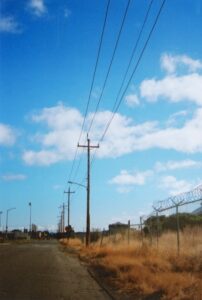I recently reached the five-year mark at my day job, which is another topic entirely. But as a result of this, I was given an opportunity to order a bonus gift from a loyalty-type catalog online. These are usually a mixed bag, in my previous experience, SkyMall-style gadgets I don’t need like wine fridges and socket sets.
At Samsung, they did this at the end of every year, but the gifts were maybe four or five Samsung items that had dropped off the market, like the remaining stock of last year’s hot tablet. One year, I got a netbook that was sort of cute and decent for travel, but painfully slow and cheap. I took it apart to upgrade something, and ended up breaking it. The next year, I got a 40-inch TV, probably the last generation without the “smart” features, which is fine by me. They also had smaller gift things, like for merit-based recognition, and the gifts were much worse. I think once I got a fanny pack, and another time, I got some no-name bluetooth headphones that worked once.
Anyway, the work gifts were slightly better than that, but there wasn’t much I really needed or wanted. I didn’t really need another low-end point-shoot camera or a charcoal grill. I ended up ordering a Yamaha electric piano keyboard, and then sort of forgetting about it. It showed up yesterday, and I unboxed it and got into a strange nostalgia mode about the idea of piano.
When I was in high school and worked as a stagehand at the Performing Arts Center, I was around pianos constantly. I think we had like a dozen of them; there was a flawless Steinway concert grand, and a really nice Yamaha upright. But there were also other uprights of various manufacture in pretty much every practice room in the music department, along with other floaters that moved around everywhere. Some of these were decent. Some had survived elementary schools and were latex painted bright orange and barely stayed in tune. I never played piano, but I moved a lot of them, cleaned them, and spent a lot of time polishing the Steinway, like it was a sports car. The idea of piano intrigued me, especially after being around so many people who could play.
In my senior year, they started teaching a piano for non-music-majors class, and got a lab full of really nice Yamaha digital pianos. I took the class in my final semester, and about eight of us sat in the little room, plinking away and learning basic chords and how to use both of our hands at the same time. It was neat to me, because this was in 1989, the height of MIDI and pop music using Korg M1s and Yamaha DX7s in everything. The keyboards we used had very convincing sampled sound, maybe a dozen instruments, like a pipe organ and marimba, along with concert grand and electric pianos. They had weighted keys and felt very nice, at least to a person like me with no experience whatsoever.
They were also wired together in a network. We each had our own headphones to hear ourselves, but the teacher could share his audio to all of us, to play examples. He could also snoop on each of us during our free practice time. We had a similar setup in the new Apple II lab that I practically lived in. This was the very start of a networked world, which has now become unimaginably huge. Teachers can share and network and spy and monitor more than I could have ever dreamed in 1989. I’m not harping on the spying stuff; I just find it interesting that I lived most of high school in an era when there was no technology beyond overhead projectors with transparencies and ditto machines, and saw the very first edge of interconnected machines used in learning. I even helped perpetuate this – my first programming job ever was writing a schedule-maker program for sports teams, so a coach could enter all the home and away games and practices on a calendar, then save it to disk for later and print a handout for all the players’ families.
The piano class was fun. I mean, I took it because I’d finished all but one class before my last semester, and took all fuck-off classes for the most part: two study halls (one to work in the theater), a drafting class where I worked on whatever I wanted, a computer class where I did all the assignments in the first week and spent the rest of the year working on that schedule program or playing chess. I’d never played a musical instrument, and just getting to the point where I could play a chord and a melody in straight time and almost read music was an enjoyable challenge that made me use a different part of my brain. I also ended up meeting someone I briefly dated and went to prom with, so that’s another memory that came out of it.
I did buy a cheap Casio keyboard at the time, one with mid-sized plastic keys and a bunch of cheap sounds, but I never religiously practiced outside of school. There was some invisible wall for me, aside from my own brain issues. I’m not really that musically inclined, but also piano was never seriously “cool” to me. There are occasional bits and bobs of interesting keyboard music, like I remember buying a Journey songbook and trying to plink out the song “Faithfully,” but that was already five or six years behind the curve. I ended up starting bass guitar shortly after that, and then drifting away from that as college got underway.
At IU though, it seemed like everyone I knew had some degree of literacy with piano. I mean, it’s the biggest and best music school in the world, and you have to take keyboard proficiency as an undergrad. There were also pianos everywhere; I worked in the Musical Arts Center and was constantly moving pianos, plus every practice room had one; every dorm lounge had one or two; the basement of my dorm had its own practice rooms, too. It always amazed me when someone who wasn’t a music major, like some economics major friend, was suddenly presented with a piano, and would do the “oh, I had to take it as a kid” and then could belt out “The Entertainer” or some random Billy Joel riff ten times better than I ever could.
I would sometimes sneak into a practice room and mess around. This was fairly easy the year I was at IUSB, because I worked late and had keys and 24-hour access. It was both cathartic and frustrating, because I’d quickly run through the four or five stupid tunes I knew, Christmas songs and “Camptown Races” and whatever else, then drift into stupid experimental free-form garbage, just banging on keys until something sounded right for a second, and wishing I had the ability to do more.
So now I have this new keyboard in front of me. It’s got 41 full-sized keys, but they’re cheap plastic and not weighted, and not touch sensitive. It also has no MIDI or USB out, just a headphone jack, so no way to use it as a synth with my computer. It has the usual 300-some styles, some cheesy and some decent, and some built-in demo songs and drum patterns and other junk I’ll never use. It could be a fun toy to plink around with. But, I’ve got other musical instruments here I’m not learning well, and too many other things taking up my time. And I’ve got so much junk in the house lately. Maybe I will buy a dummies book and give it a month, see what I can learn. Maybe it will go to a more worthy home. We’ll see.







